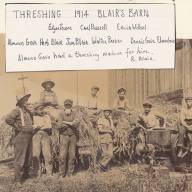Asiatic knotweed (Reynoutria japonica) has long challenged riverbanks and roadsides in the Mad River Valley. Known for its aggressive growth, knotweed outcompetes native plants, disrupts natural communities, and can cause significant damage to infrastructure. Knotweed is notorious for its resilience and rapid spread — it thrives in various environments, forming dense thickets that are difficult to eradicate, and its robust rhizome system allows it to regenerate. However, recent data collected across The Valley supports that this invader can be curtailed with persistent and well-coordinated management.
The Mad River Valley Knotweed Project has tried different management techniques, from cutting to digging to pulling and even introducing goats this year. These methods aim not only to reduce the visible presence of the plant but also to weaken its underground rhizome system and prevent regrowth. Anecdotal stories from volunteers have suggested efforts to remove knotweed in The Valley are working. Now, there is science-based evidence to support those claims.
Last year, baseline data was collected to assess the efficacy of knotweed management at various sites in Fayston, Granville, Waitsfield, and Warren. Sites were resampled this year, and the results are promising — there has been a notable decline in the number of knotweed stems, stem size, and percent cover over the past year.
One of the most encouraging signs of success in knotweed management efforts is the reduction in the number and size of stems across various sites. Data collected from more than 30 different areas showed that, on average, the number of stems decreased by more than 15%, and the size of stems decreased by more than 40%.
These figures suggest that management strategies are diminishing the plant’s regenerative ability. Consistently removing stems depletes the plant’s energy reserves, leading to a gradual decline in its overall population. Perhaps one of the most striking indicators of successful knotweed management is the reduction in stem size. The size of knotweed stems is a measure of the plant’s vigor — larger stems indicate a more robust plant, while smaller stems suggest that the plant is struggling.
Swimming holes frequently visited by the public in Waitsfield at Lareau Park or near the covered bridge have seen some of the most dramatic improvements. Stem size has declined by more than 90% at Lareau Park, and the number of stems has reduced by more than 75% near the covered bridge.
While the results in The Valley are encouraging, managing knotweed is an ongoing project. Knotweed is a stubborn plant that can quickly rebound if efforts are reduced or stopped, and continued management and support are essential to ensure that the gains made so far are not lost. It’s encouraging though that the time required to manage these sites after initial intervention is significantly less than when it started. For all the sites in Waitsfield where ongoing management took place in the past two years, time devoted to knotweed has dropped by 50% from 637 person-hours to 319 because those areas no longer require as much attention.
Future research will assess continued management while also monitoring for other non-native invasive plant species across The Valley. In collaboration with faculty and graduate students at the University of Vermont, a new, more extensive monitoring plan is in place to ensure data collection is standardized and to provide additional insights into the management methdos. The lessons learned here can serve as a regional model for communities facing similar challenges, demonstrating that even the most formidable invasive plants can be managed with persistence and innovation.
Evan Horne is a recent graduate of the field naturalist program at the University of Vermont and was the project coordinator for the Mad River Valley Knotweed Project this summer.












